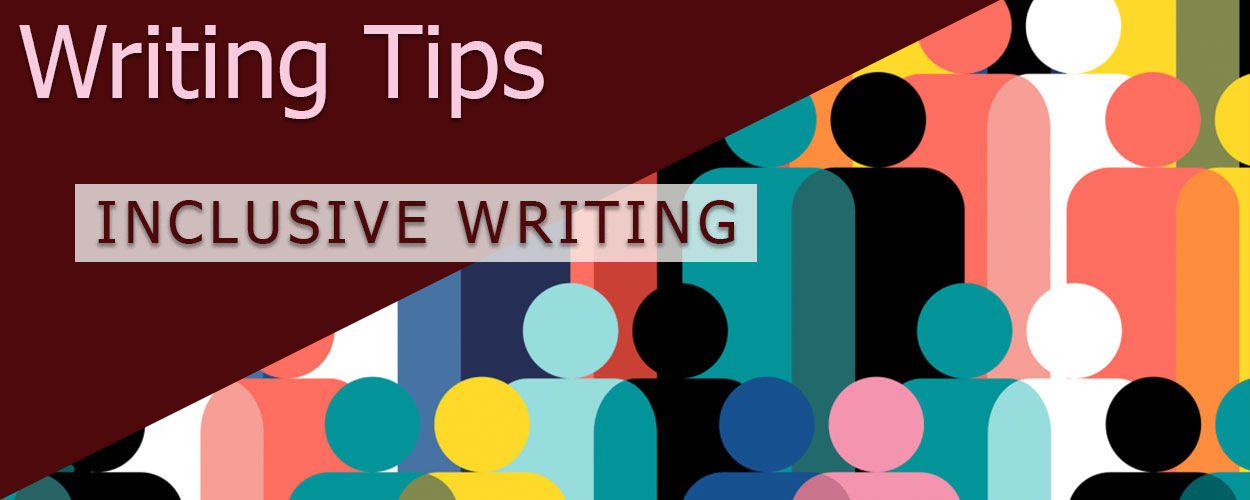

Posted: November 21, 2023
This is a difficult subject to discuss. I will do my best to write with the utmost sensitivity, but I cannot speak for all races, ages, sexualities, genders, or body types. I can only write what can be deemed by logic, and I acknowledge that I’m also subject to personal bias based on my upbringing and the media I consume. I would appreciate that any flaws in this article be addressed in a polite tone so that I may understand my error and move to change my views without risk of being offended or attacked because of my lack of knowledge. Thank you.
“Write what you know” is always what they tell you, but when you want to include characters of a different ethnicity, sexuality, ability, body type, even different gender, it can be a daunting task. You don’t want to offend anyone by your portrayals. They’re different, and as much as differences are a beautiful thing, they are a barrier between you and understanding others.
The biggest piece of advice I can give is to start within your comfort zone. When you write, your characters are always a reflection of you, your main character more so than others. At the beginning of your writing career, a good strategy is to use this, and make your main character reflect yourself. Start with that; stick with what you know firsthand.
As an author, you may want to be as inclusive as you can, but do not force it. Inaccurate inclusion can be just as damaging as disregarding inclusion at all. If you have nothing to base those characters on, it’s even harder. What would a fifty-year-old Englishman know about writing the story of a preteen Chinese girl? What would a mid-twenties straight woman know about writing the story of a coloured gay man in the 1890s?
That is where research comes into play. A lot of research, just like every other aspect of ensuring a story’s accuracy. Can you step into the shoes of this character? If you have doubts, change your narrative; put the story on hold; maybe you’re just not ready to write it.
You may find it hard to believe that over-inclusion can exist, but it does, and no, it doesn’t mean that because not 75% of the characters are white, straight men that now white-straight men are feeling less seen. Over-inclusion is when the characters do not match the setting or the story. Caucasian and coloured children together in the same 1930s school? Sadly, this is not historically accurate. A powerful, headstrong woman facing no prejudice of any sort in Victorian England? Not historically likely. A transgender gay man, in our own day and age, facing absolutely no discrimination from anyone? Not very believable.
You must also consider why you are telling this story. Why would you want to write from this character’s perspective? Is it because of a certain message you want to share? Is this the only way you can portray this message?
For example, when I was in college, my class was studying the treatment of Indigenous people in Canada. I had the idea for a short story in which an indigenous girl joins a modern-day elementary school. At first, the story was meant to be about the indigenous girl and how she was adjusting to the school, especially after how her parents and grandparents were treated in schools previously. My professor informed me that since I am not indigenous, this is not my story to tell. My narrative instead switched to the perspective of a girl in the same school, reacting to the indigenous girl joining her class. The main character’s family was racist, and the point of the story was for the MC to begin in alignment with her family’s views, only to realize that those views were wrong and that she was uninformed. She gets to know the indigenous girl better, and eventually, they become friends. She pulls herself loose from her family’s views.
Tell the stories you’re meant to tell, not the ones you want to tell. Stories about gay people should be told by gay people. Stories about black people should be told by black people. Stories about trans people should be told by trans people. Stories about Indian people should be told by Indian people. Stories about indigenous people should be told by indigenous people. Et cetera. If it is a story that you absolutely have to tell, discuss with someone whose experience is firsthand, because decisions should not be made for a group without them having a seat at the table; it goes against the entire purpose of inclusive writing.
Now, there are things you can do, like with all other things in writing, so long as logically, they make sense. Not only can you include characters of other races, backgrounds, and cultures in your work, but you can include characters of varying sexualities and genders as well. You can include characters with physical disabilities; you can include overweight/underweight characters and characters who face the struggles of body-shaming by others; you can include characters struggling with non-physical disabilities like depression or anxiety; you can include characters on the autism spectrum. Give them a place, make them accurate, and your story has everything it needs to have, but the perspective should be from you, not from you pretending to be someone else.
Writing Good Characters
Writing Compelling Villains
D&D Alignments for Writing Characters
Dropping Hints & Good Storytelling
How to Do Book Research
Pixar’s 22 Storytelling Rules
Writer’s Burnout Part 1—Explanation & Prevention
Writer’s Burnout Part 2—Identifying Signs & Recovery
Writer’s Block & How to Overcome It
Tigerpetal Press is a small book press dedicated to publishing local authors and poets.